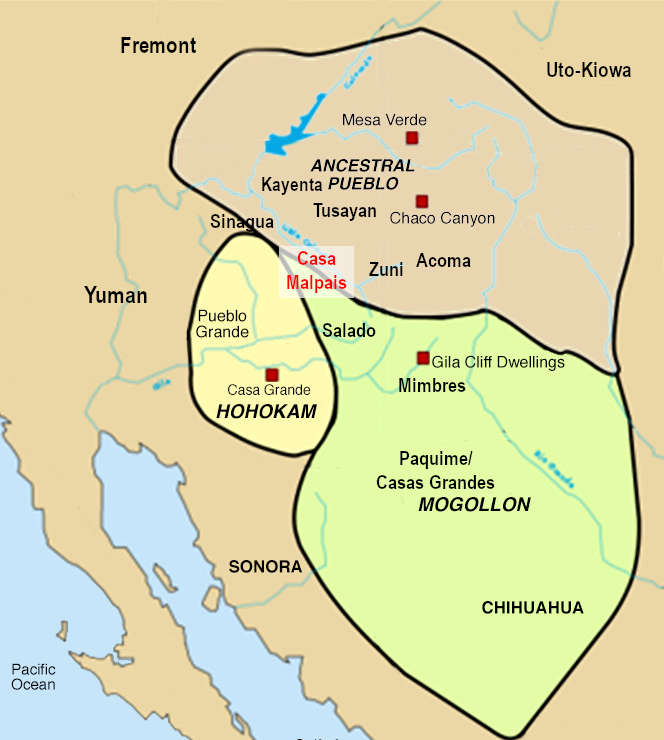Hohokam
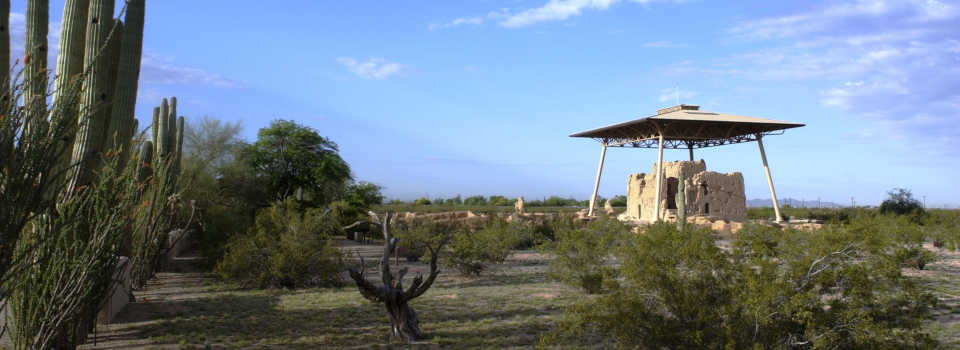
The Casa Grande Ruins
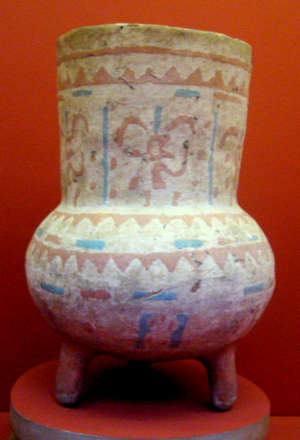
A Hohokam pot from Casa Grande
The Hohokam were a people who occupied the greater part of central and southern Arizona for more than a thousand years. They have been primarily noted for their development of irrigation and their construction of elaborate water control and distribution systems. But like the Ancestral Puebloans to their north, Hohokam culture went through several phases over the years, beginning with nomadic hunter-gatherers and proceeding through the development of pithouses, above-ground dwellings and finally multi-story pueblos. However, around 1350 CE a great drought set in all across the southwest and the centers of Hohokam culture disappeared as the people migrated to areas with more water and less heat.
Major Hohokam centers that have been identified are Snaketown, Casa Grande and Pueblo Grande. Snaketown was abandoned around 1050 CE and most of those people moved to the area of Pueblo Grande. Pueblo Grande was built around the confluence of the Gila and Snake Rivers in what is now the Phoenix basin.
Evidence of a culture from which the Hohokam may have evolved has been found in the Tucson basin. That evidence indicates a culture that began more than 3,000 years ago but most archaeologists are agreed that the major defining facets of Hohokam culture emerged around 300 CE. Their pueblos were located at the crossroads of major trade routes connecting the Mogollon to the east with the Pitayan and the Pacific coast to the west, the Trincheras in Mexico to the south with the Ancestral Puebloans to the north and east.
With influences from their trading partners showing everywhere, it is thought there was a lot of immigration and trade to and through the Hohokam centers.
By 1300, Pueblo Grande was probably the most populous city in the Southwest. By 1450, the Great Drought had been on for 100 years and everything was abandoned.
Archaeologists think that most of the people migrated to cooler, wetter areas in the surrounding mountains and are the ancestors of todays Tohono O'odham and Pima peoples. Some went northeast into the Salado area and merged with those people.
When the Apache first came into the area around 1500 CE, there was virtually no one to oppose them until the Spanish came along in the 1530's.
Some irrigation systems built by the Hohokam are still visible from space. Some sections of those systems have been dug out and are still in use in local irrigation systems.
The Hohokam Chronological Sequence
- The Pioneer Formative Period : 1-750 CE
The early Hohokam have been traced to a group of small villages in the middle Gila River basin. Their culture was successful enough that they grew to develop trade routes with northern Mexico. It was around 300 CE when new squash, beans, cotton and other seeds began to appear, probably brought north through trade with central Mexico. Cultivating these crops brought about the development of irrigation systems and once there was that kind of investment in a physical plant, the people became quite sedentary. Population growth was limited only by the ability of their systems to feed their people. - Colonial/Pre-Classic Period : 750-1050 CE
Throughout the period villages grew larger and irrigation systems expanded and grew more complex. Social stratification began and burial ceremonies grew more complex. The culture grew more prosperous as attested by the evolution of pottery with a red slip over a buff paste. Influences from Mexico increased and ball courts were built in many areas. Common courtyards and common-use ovens developed. The largest settlement of the time, Snaketown, was partially burned and suddenly abandoned in 1050. - Classic Period : 1050-1450 CE The Classic Period saw larger and larger building and irrigation systems built in the Gila-Salt River Basin, in the Tucson Basin and in the area around Grewe-Casa Grande. The end of the period began as the effects of the coming Great Drought began to be felt around 1350. The social stratification of Hohokam society collapsed almost overnight and the people began to stream out of the area headed mostly east or south. By 1450 what was once the most densely populated region in the American Southwest was almost entirely depopulated.
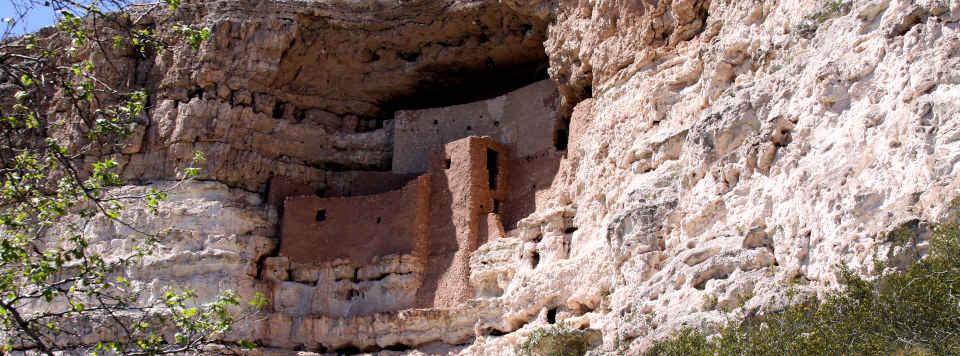
Montezuma's Castle
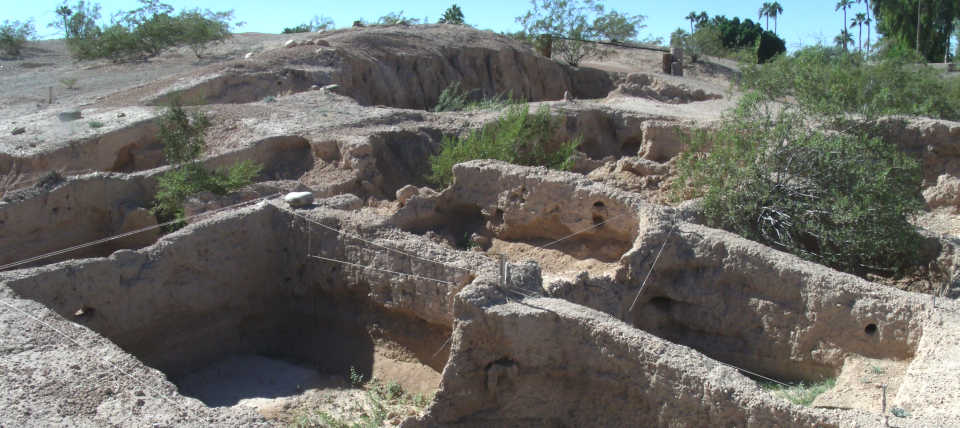
The Mesa Grande ruin in Mesa, Arizona
Pottery photo courtesy of Flickr userid Beesnest MaClain, CCA 2.5 Generic License
Lower photo courtesy of Tomas Castelazo, CCA-ShareAlike 3.0 License
Bottom photo courtesy of Wikipedia userid Tony the Marine, CCA-ShareAlike 3.0 License
Sites of the Ancients and approximate dates of occupation:
Atsinna : 1275-1350
Awat'ovi : 1200-1701
Aztec : 1100-1275
Bandelier : 1200-1500
Betatakin : 1275-1300
Casa Malpais : 1260-1420
Chaco Canyon : 850-1145
Fourmile Ranch : 1276-1450
Giusewa : 1560-1680
Hawikuh : 1400-1680
Homol'ovi : 1100-1400
Hovenweep : 50-1350
Jeddito : 800-1700
Kawaika'a : 1375-1580
Kuaua : 325-1580
Mesa Verde : 600-1275
Montezuma Castle : 1200-1400
Payupki : 1680-1745
Poshuouingeh : 1375-1500
Pottery Mound : 1320-1550
Puyé : 1200-1580
Snaketown : 300 BCE-1050
Tonto Basin : 700-1450
Tuzigoot : 1125-1400
Wupatki/Wukoki : 500-1225
Wupatupqa : 1100-1250
Yucca House : 1100-1275
